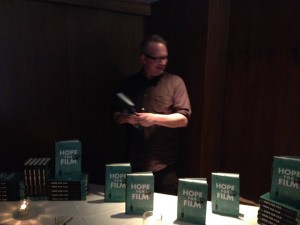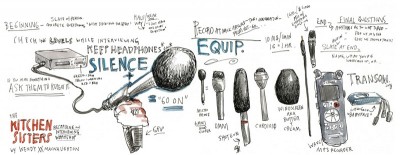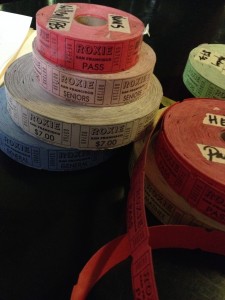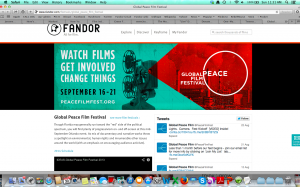Month: September 2014
 In reviewing my book, Nick DeMartino captures a great deal of what I am feeling these days. I think we can move things forward and build it better together. Nick spots how my love of cinema drew us forward and then how that same love drew me away from a focus on project producing.
In reviewing my book, Nick DeMartino captures a great deal of what I am feeling these days. I think we can move things forward and build it better together. Nick spots how my love of cinema drew us forward and then how that same love drew me away from a focus on project producing.
“At a certain point, living an independent life, you start to recognize how fragile the whole enterprise is. You can’t afford to ignore the big picture. And you can’t do it alone,” writes Hope, as he shifts gears in the final chapters to share the story of how he left New York and hands-on production to focus on that “reboot,” first in an ill-fated stint at the San Francisco Film Society, and now as CEO of Fandor, an indie-focused streaming video-on-demand service, where he’s busy trying to tackle some of the “141 Problems and Opportunities for the Independent Film World,” which is included in this book as an appendix.

The Kitchen Sisters (Davia Nelson & Nikki Silva) are holding their Interviewing & Recording Workshop in New York City on Wednesday, September 17 from 10am to 1pm at WNYC Radio. The three-hour session is designed for people who want to acquire and hone their skills for an array of audio projects: radio, online, podcasts, storytelling, oral histories, audio slideshows, family histories, news, investigative reporting, documentaries and other multimedia platforms.
American TV is written for the most part by (white) men. The same applies to American movies, as well as European movies and European TV. Is it then a surprise that male characters outnumber females at least 3 to 1, even though females comprise over 50% of the population? Even more staggering is the fact that this ratio remains the same since 1946! According to Stacy Smith of the USC Annenberg School for Communication & Journalism, 80.5% of all working characters are male and 19.5% are female – in contrast, of course, to real world statistics, where women comprise 50% of the workforce.
 Indie filmmakers must change how they do things. Too many filmmakers’ actions are predicated on antiquated business practices. These old ways limit a filmmaker’s ability to build audiences and earn revenue. It is time for a serious change.
Indie filmmakers must change how they do things. Too many filmmakers’ actions are predicated on antiquated business practices. These old ways limit a filmmaker’s ability to build audiences and earn revenue. It is time for a serious change.
We now live in an era of cultural abundance and all of our practices need to take this into account. Audiences are overwhelmed with demands and options on their leisure time. It is harder than ever to get people to commit to doing anything. If you accept this is a reality why would you take your film to a film festival (other than the five leading market ones) without having your next steps well planned?
I hope film fans everywhere find my book and dig it. It is so hard to get the word out that I am particularly grateful whenever anyone writes something good about the book. Evidently it makes a huge difference when someone posts a five-star Amazon review. Hopefully those of you who read this blog and recognize how much effort has gone into it over the years, might just want to return the favor and post such a review. Or even better yet, start a blog and post the review there too.
This week brought me some pleasure when two friends who have blogs posted their review.
 Film festivals have done an incredible job aggregating their local film loving communities. They have invested years into becoming trusted curatorial brands to that local audience. Yet festivals have many challenges — and I witnessed this first hand last year when I ran the San Francisco Film Society.
Film festivals have done an incredible job aggregating their local film loving communities. They have invested years into becoming trusted curatorial brands to that local audience. Yet festivals have many challenges — and I witnessed this first hand last year when I ran the San Francisco Film Society.
Most festivals have very limited bandwidth. They are committed to running their successful legacy programs. Even when they have experienced attendance drops or limited growth, they find it challenging to launch new programs and revenue streams for fear that their historic offerings might suffer. They can barely do all that currently do, let alone increase their capacity. Every non-profit suffers from financial limits, often operating with next to no cash reserves. How can they change with the times or expand their offerings?


